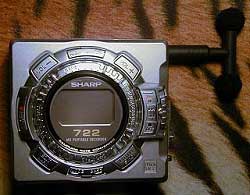Live Recording Techniques - On A Budget!
A Tutorial by David Breton
Several years ago when Mini Disc (MD) recorders first came out, I thought it would be neat if musicians and singers could have their own Archival CD Recording of a live concert that they had invested so much of their time over several weeks to rehearse for, but never heard from the audience's point of view!
So twenty or so recordings later, I decided to write down the techniques I use, some of which have been learned through hard experience. The techniques described here of course do not rival a recording studio with multi tracking and multiple takes, but focus on how to do a live recording, with no chance of a re-take, how post processing will let you "polish up" the final mix, how to make a professional looking product and how to cover your costs, which includes your recording equipment investments.
Step One - The Live Recording
Of course you want to have a high quality live recording, keep your equipment purchases on a budget, and as portable as possible. An MD recorder can help to address these requirements, the quality is far better than cassette tape, and the portable version of the MD recorder is very small, requiring no AC power.
The most important components in the live recording process are the microphones and the room acoustics! For classical and jazz performances the room should have the right amount of natural reverberation to make for a "live" sound. An acoustically dead room makes for a "dull" live performance and, although you can add some artificial room reverberation into the final mix, it will never match the "real thing".
Selecting the Digital Recorder
The invention of the MD recorder made live recording an affordable hobby. There are many types and brands on the market today, but only the portable models made by Sharp appear to have the right advantages for live recording namely, a proper recording level meter calibrated in dB, no AGC (a live recording killer). Another important consideration is that the MD recorder has the right level of input level compression that prevents the dreaded overload condition. I set my Sharp MD recorder's recording level once by clicking my fingers hard right next to the microphones so the recording level just goes over 0 dB and then leaving it at that setting for the rest of the concert. Even a large orchestra will not clip the recorded signal (if the mics are set back at least 15 feet) and the dynamic range is good enough to pick the quietest vocal soloist!
Where do you buy the MD recorder? I got mine at www.minidisco.com My first Sharp lasted for a while until it got kicked off the top tier of a chorus riser, five feet onto a wood floor. Thankfully, it was connected to plenty of microphone cable and finished recording the concert, but its eject mechanism never worked properly after that traumatic experience. This gave me an opportunity to examine the insides; the thing is a marvel of miniaturization.

Sharp 722 MD Recorder - with stereo "T" bar mic
Selecting the Recording Microphones
The microphones should be the small condenser recording type. These have a flat response to capture from the lowest bass to the high pitch harmonics of the female singing voice and also preserve the clarity and position of all the reverberances in the live room setting. The small size of the condenser diaphragm allows it to respond quickly to fast sonic attacks.
The other important requirement of a live recording microphone includes the ability to withstand high pressure levels. It is amazing how loud a large orchestra can get, especially with percussion and horns! The one thing that will absolutely spoil your live recording is a mic or recorder overload, since you can not go back and retake it again. The other most important parameter is the condenser microphone's self noise. This coupled with the MD recorder's microphone preamp, always ends up as a slight hiss in your recording, but modern post-production hiss reduction techniques can reduce much of this to a very low level.
Where do you buy these microphones on a budget? My favorite vendor is the www.soundprofessionals.com Web site, which will show the numerous recording microphone options available, ranging from the single point stereo microphone that is fitted inside the same box that encloses your Mini Disc recorder to binaural microphones that fit on top of a microphone stand. You can kit out your microphone requirements for anything between $80 to $250.
I have had some good success with the single point stereo (in rooms that have natural good acoustics) but prefer the Binaural type that sit on top of a microphone, spaced the distance between ones ears.